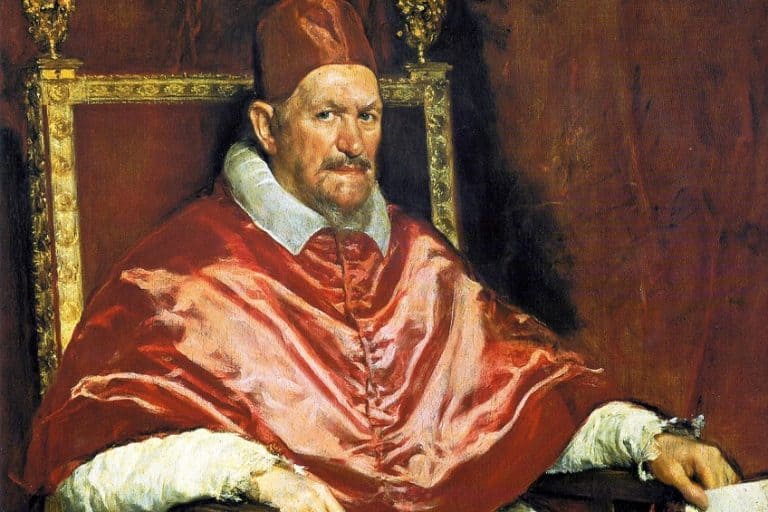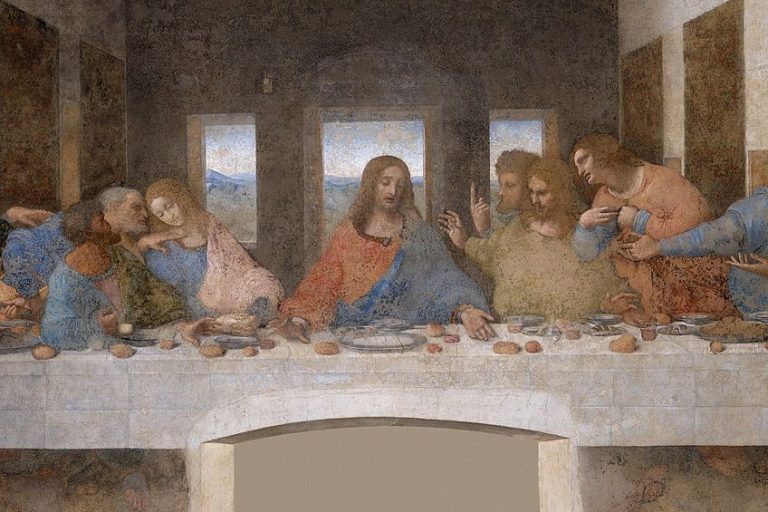“The Paston Treasure” Painting – A Quick Analysis of the Work
The Paston Treasure painting is a captivating oil canvas dating back to the 1660s, tied to the notable British Paston family. It is a historically significant piece, both for its depiction of the Paston family’s extensive collection of global artifacts and its artistic merits. Considered to be a product of a Dutch artist, the painting accurately portrays a selection of objects that highlight the family’s wealth and cultural interest in collecting exotic items from around the world.
Table of Contents
Key Takeaways
- The Paston Treasure is an oil painting capturing a portion of the Paston family’s collection from the 17th century.
- It maintains historical significance and reflects 17th-century interests in collecting and the Dutch Vanitas tradition.
- The artist’s identity remains unknown, increasing the painting’s enigmatic allure.
Historical Context
| Artist | Unknown |
| Date Created | c. 1663 |
| Medium | Oil on canvas |
| Genre | Still life painting |
| Period/Movement | Baroque |
| Dimensions (cm) | 246 x 165 |
| Series/Versions | N/A |
| Where Is It Housed? | Norwich Castle Museum & Art Gallery, Norwich, United Kingdom |
| What It Is Worth | Historically significant; not for sale |
The Paston Treasure painting is a captivating oil painting from the 17th century, offering a rare glimpse into the private collection of a prominent Norfolk family during the post-Civil War era in England. Much more than a work of art, it embodies the grandeur and the fall of the house that owned it.
Who Commissioned the Work?
The commissioning of The Paston Treasure painting is attributed to Sir William Paston (1610 – 1663), Norfolk’s significant figure and a known Royalist.
His patronage of the arts, along with his interest in collecting, was a testament to his wealth and taste, influenced by his education and travels across Europe.
The Paston Family Legacy
The Paston family had established their legacy in Norfolk as early as the 15th century. By the time William inherited the estate, the Pastons had become influential through their political, legal, and social undertakings. The family’s lineage included judges, members of parliament, and scholars, integral to the fabric of Norfolk’s history.

Oxnead Hall and the Collection
Oxnead Hall, initially erected in the 1560s by William’s uncle, Clement Paston, served as the primary residence of the Paston family. Under William’s ownership, the Hall was transformed to resemble an Italianate villa, reflecting his tastes acquired from his travels. It housed the family’s impressive collection of art and natural wonders which eventually faced dispersal due to financial difficulties, and some pieces today are part of the Norwich Castle Museum collection.
The Paston family’s fortunes dwindled after the Civil War, resulting in some of the family eventually declaring bankruptcy and selling Oxnead Hall.
The Painting Explained
The Paston Treasure is a captivating 17th-century oil painting rich in detail with the unique ability to encapsulate a microcosm of the world through the possessions it portrays. This section delves into the origins of the artwork, the myriad of objects it presents, and the meaning behind this collection.
Who Created the Artwork?
The artist behind The Paston Treasure remains unidentified, although it is believed to be the work of a Dutch School painter. Commissioned by either Sir Robert Paston or his father, Sir William Paston, in the early 1660s, the painting is a historically significant record of British collecting during this time.

Objects in the Painting
The artwork displays an array of objects that reflect the wealth and status of the Paston family as collectors. From a globe indicating their travels to shimmering vessels and intricate musical instruments, the painting is a showcase of their opulent treasures.
Paintings often incorporate a diverse array of objects across various categories. Scientific instruments like globes and astrolabes frequently find their place, offering a glimpse into the era’s exploration and intellectual curiosity.
Musical instruments such as lutes and violins add a harmonious touch, reflecting the importance of music in society. Collector’s items like shells and corals often symbolize the fascination with the natural world and exotic discoveries. Additionally, paintings often feature precious materials like gold and silverware alongside intricate jewelry, highlighting the allure of luxury and craftsmanship in art. Each category enriches the composition, offering layers of meaning and contributing to the overall narrative of the artwork.
Materials and Techniques
The Paston Treasure is painted in oil on canvas, characteristic of the time and region. Despite its age, the sophisticated use of light and shadow in the painting, as well as the masterful rendering of diverse textures, signify high technical proficiency.

Symbolism in the Artwork
Drawing from the vanitas still-life tradition, the painting is replete with symbolism. It reflects on the transience of life and the futility of pleasure, with each object carefully chosen to represent the temporality of earthly treasures and the ultimate pursuit of knowledge and enlightenment.
Notable Artifacts
The painting presents a lavish display of silver and gold objects, showcasing the wealth and social status of the Paston family. Among the collection, a meticulously rendered nautilus cup stands out, not only as a testament to the artisan’s skill but also as a symbol of prestige during the era. Musical instruments like lutes hint at the family’s appreciation for music and the arts. Additionally, a prominently featured globe signifies intellectual curiosity and a broader perspective on the world.
Furthermore, the portrayal of a silver flagon with its reflective surfaces demonstrates the painter’s adeptness in capturing light and texture, adding to the overall opulence and realism of the scene.
Cultural Significance
The cultural significance of the painting extends through various elements embedded within its composition. The rich pigmentation, potentially influenced by Delft, underscores the city’s reputation as a center for art and craftsmanship. Exotic textiles featured in the artwork hint at connections to Gujarat and Cairo, regions renowned for their textile production, adding layers of cultural exchange and global influence.

Moreover, any objects depicted as originating from London emphasize the family’s British roots and highlight the dynamics of cultural exchange within their eclectic collection. These nuanced details enhance the painting’s narrative, reflecting the interconnectedness of artistic traditions and trade routes during the period.
The Paston Treasure epitomizes the opulence and cultural fascination of 17th-century England. Its meticulous detail and symbolic depth invite contemplation of material wealth and societal values. Through its narrative complexity, the painting offers timeless insights into the dynamics of collecting and display. As a masterpiece of its era, the painting continues to captivate audiences, prompting reflection to the enduring power of art to illuminate history.
Frequently Asked Questions
What Is the Significance of the Ladybug in The Paston Treasure?
In The Paston Treasure, the ladybug may symbolize good fortune or the transience of life, common interpretations in the context of vanitas paintings of the 17th century, which remind viewers of the fleeting nature of earthly life and possessions.
Where Can The Paston Treasure Currently Be Viewed?
The Paston Treasure is housed in the Norwich Castle Museum & Art Gallery, located in Norfolk, UK. Visitors can explore this enigmatic work in the venue where it is part of a permanent collection.
Isabella studied at the University of Cape Town in South Africa and graduated with a Bachelor of Arts majoring in English Literature & Language and Psychology. Throughout her undergraduate years, she took Art History as an additional subject and absolutely loved it. Building on from her art history knowledge that began in high school, art has always been a particular area of fascination for her. From learning about artworks previously unknown to her, or sharpening her existing understanding of specific works, the ability to continue learning within this interesting sphere excites her greatly.
Her focal points of interest in art history encompass profiling specific artists and art movements, as it is these areas where she is able to really dig deep into the rich narrative of the art world. Additionally, she particularly enjoys exploring the different artistic styles of the 20th century, as well as the important impact that female artists have had on the development of art history.
Learn more about Isabella Meyer and the Art in Context Team.
Cite this Article
Isabella, Meyer, ““The Paston Treasure” Painting – A Quick Analysis of the Work.” Art in Context. February 18, 2024. URL: https://artincontext.org/the-paston-treasure-painting/
Meyer, I. (2024, 18 February). “The Paston Treasure” Painting – A Quick Analysis of the Work. Art in Context. https://artincontext.org/the-paston-treasure-painting/
Meyer, Isabella. ““The Paston Treasure” Painting – A Quick Analysis of the Work.” Art in Context, February 18, 2024. https://artincontext.org/the-paston-treasure-painting/.











